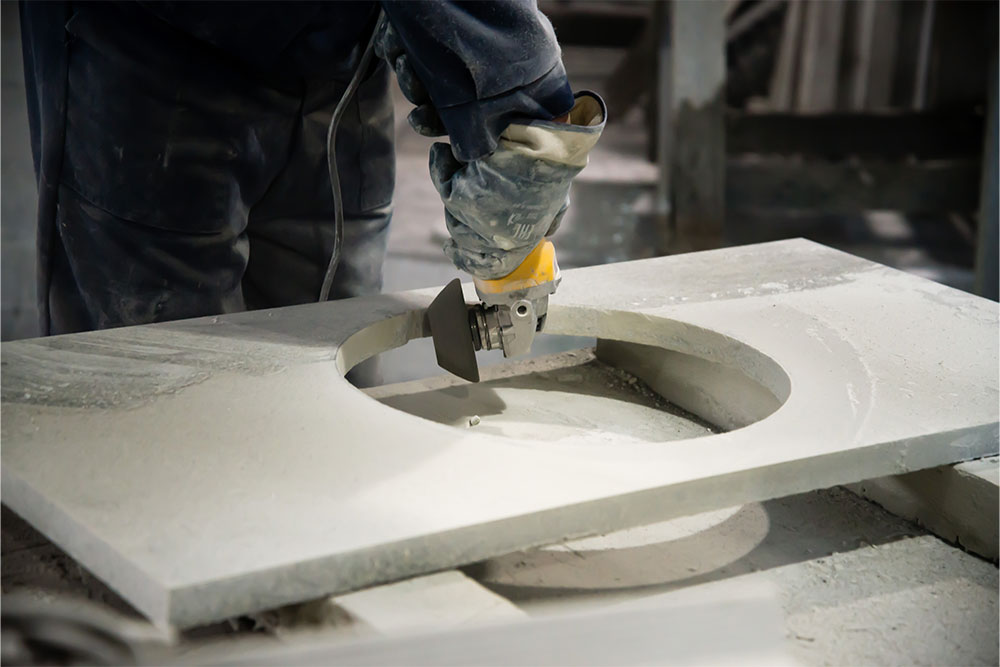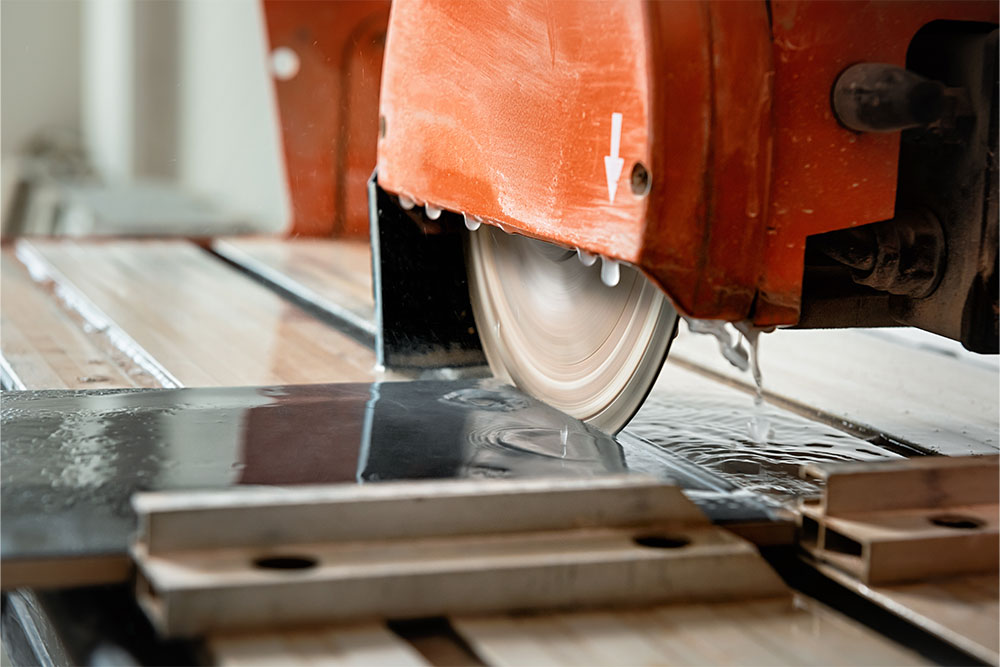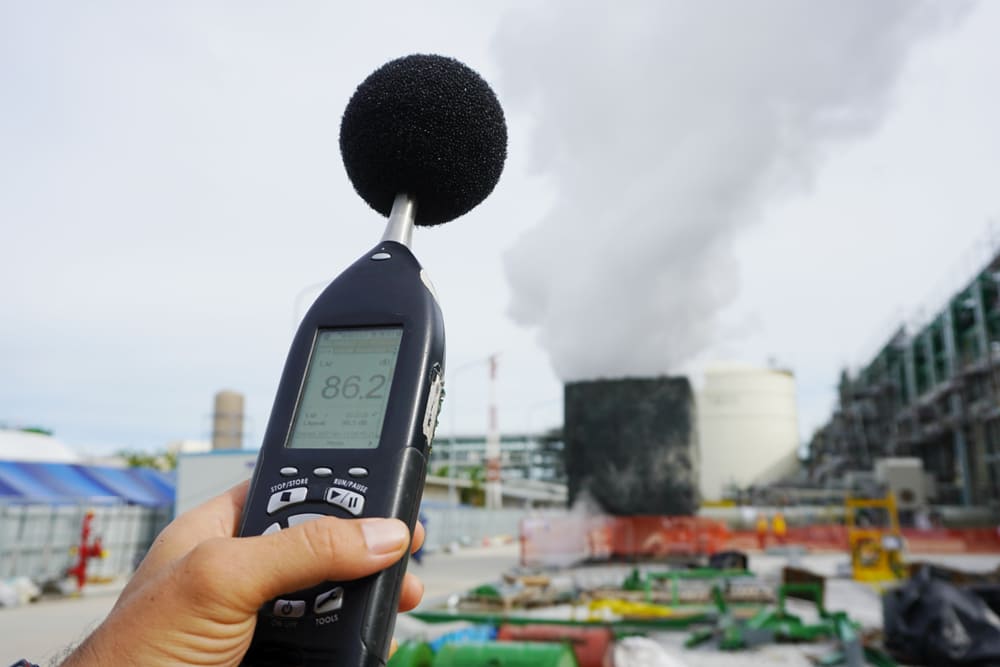
Respirable crystalline silica (RCS) is a recognised health hazard. Anyone who works with silica-containing materials is potentially at risk. And since these materials are widely used in manufacturing and construction, a significant percentage of the working population is routinely exposed to RCS.
This blog explains what RCS is, why it’s hazardous and how to protect against it at work. If you handle silica-containing materials or supervise others who do, it’s essential you understand the risks and control measures of working with RCS.
Key Takeaways
- Respirable crystalline silica is a hazardous fine dust released during the cutting, grinding or processing of silica-containing materials.
- When inhaled, RCS particles penetrate deep into the lungs, causing irreversible damage and potential lung disease.
- High-energy tasks in industries like construction, quarrying and ceramics manufacturing pose the most significant risk of RCS exposure.
- Employers must assess risks and apply control measures such as engineering controls, safe work practices and PPE to comply with COSHH Regulations.
- Workers must follow safety procedures, use provided controls and equipment correctly and report any safety concerns to stay protected.
What is Respirable Crystalline Silica?
Silica is a naturally occurring mineral found in different types of stone, soil, sand and clay.
When silica-containing materials are cut, crushed, cracked or processed in any way, silica dust is released. These dust particles vary in size. The smallest are classified as respirable crystalline silica or RCS.
RCS particles are around ten times smaller than a grain of salt. Their size makes them easy to breathe in (hence the name respirable crystalline silica) and difficult to see with the naked eye. They also stay suspended in the air for hours after being released.
Because of these factors, workers who process silica-containing materials can inhale RCS without realising it. RCS doesn’t make you immediately ill, either, which means many workers don’t realise they’ve been exposed until it’s too late.

Why is Respirable Crystalline Silica Hazardous?
Our respiratory systems are able to filter out most particles in the air. Inside the body, airways are lined with tiny hair-like cells called cilia. Cilia work together with mucus to trap fine particles and microbes before pushing them back up towards the throat to be swallowed or coughed out.
Respirable crystalline silica particles are too small to be caught by cilia cells, so, when inhaled, they reach the deepest parts of our lungs – the alveoli. Once RCS particles are inside the alveoli, they’re impossible to expel. They penetrate soft tissues, causing fibrosis (scarring of the lungs), which makes it harder, even painful, to breathe.
In an attempt to protect against this damage, the body releases macrophage cells – the lungs’ last line of defence.
Macrophages can swarm and break down most foreign bodies but are ineffective against RCS particles. Eventually, the macrophages themselves die, releasing inflammatory chemicals into the surrounding tissues. Although the relationship is still unclear, inflammation like this has been linked to cancer.
While the connection between RCS and cancer is still being investigated, exposure has been confirmed to cause several other lung conditions, most notably COPD and silicosis.
COPD (chronic obstructive pulmonary disease) describes several different conditions that narrow the airways and make it difficult to breathe. The disease is incurable and can be fatal.
Silicosis has similar symptoms to COPD. It’s a consequence of severe lung scarring caused by repeated exposure. As the name suggests, silicosis is exclusively linked to silica exposure. It causes long-term disability and can also prove fatal.
Silica Dust Awareness Training
Silica Dust Awareness Training explains the health effects of silica dust exposure and how to stay safe when working with silica-containing products. It provides workers at risk of exposure with an awareness of silica dust hazards and controls.
Who is at Risk?
Silica dust is often found in the ambient air but not at dangerous levels.
Only people who work with silica-containing materials are exposed often enough and at high enough levels to be at risk.
According to the Health and Safety Executive, the most at-risk industries are:
- Construction (silica is the second biggest threat to construction workers’ health, beaten only by asbestos)
- Quarrying
- Mining
- Ceramics manufacturing
- Concrete product manufacturing
- Kitchen/bathroom worktop manufacturing
- Grit/abrasive blasting
Because the harmful effects of silica dust scale with repeated high-level exposure, certain work activities are considered more dangerous.
High-energy processes, such as grinding or drilling, release more RCS into the air. Workers who carry out these types of tasks regularly are at greater risk.
Smoking is another substantial risk factor. Your chances of developing silicosis or COPD rise steeply if you’re both exposed to RCS at work and smoke.
How Can You Stay Safe?
Workplaces where respirable crystalline silica particles are present must comply with the Control of Substances Hazardous to Health Regulations (COSHH).
Under COSHH, employers must keep RCS exposure below a set level, known as the workplace exposure limit (WEL). How you do this depends on the silica hazards present, so the first step to controlling exposure is risk assessment.
A good risk assessment should identify RCS sources and the workers most at risk. With this information, employers can implement control measures to keep exposure levels as far below the WEL as possible.
Duties for Employers
Employers have a responsibility to protect workers from RCS exposure. As mentioned, the first and most important duty is to carry out a risk assessment. After the risks are identified, control measures must be applied in order of effectiveness.
The hierarchy of control measures is:
- Substitution – For example, swapping silica-containing materials for silica-free alternatives.
- Engineering Controls – These are physical or mechanical methods that limit exposure. Examples include local exhaust ventilation (LEV) systems that can extra RCS at its source or wet cutting methods that dampen RCS and prevent it from becoming airborne.
- Administrative Controls – Procedures that reduce risks. For example, sweeping up areas where wet cutting happens after they’ve dried to prevent RCS build-up.
- Personal Protective Equipment (PPE) – Respiratory protective equipment (RPE) should also be provided to at-risk workers. RPE isn’t enough to protect workers on its own but is a valuable line of defence after controls higher up the hierarchy are applied.

For Employees
Employees also have duties. They should take reasonable care of themselves and use control measures as intended.
For example, they must ensure LEV systems are used correctly and wear the RPE that’s been provided. They should also report any safety concerns to their employer.
Employees can read more about silica dust exposure and safety in Control of exposure to silica dust, offered free by the Health and Safety Executive.
Silica Dust Training for Duty Holders
Employees have a responsibility to protect themselves, but they can only do this if employers have properly assessed RCS risks and implemented the correct control measures.
Our online Silica Dust Training for Duty Holders course equips you with the essential knowledge to identify silica dust hazards, assess risks and implement control measures per COSHH Regulations. It also includes a free e-checklist that walks through the silica dust risk assessment process and lets you record findings digitally.
This course ensures duty holders have the tools to effectively manage RCS risks and protect their workforce from the long-term dangers of silica dust exposure.






















